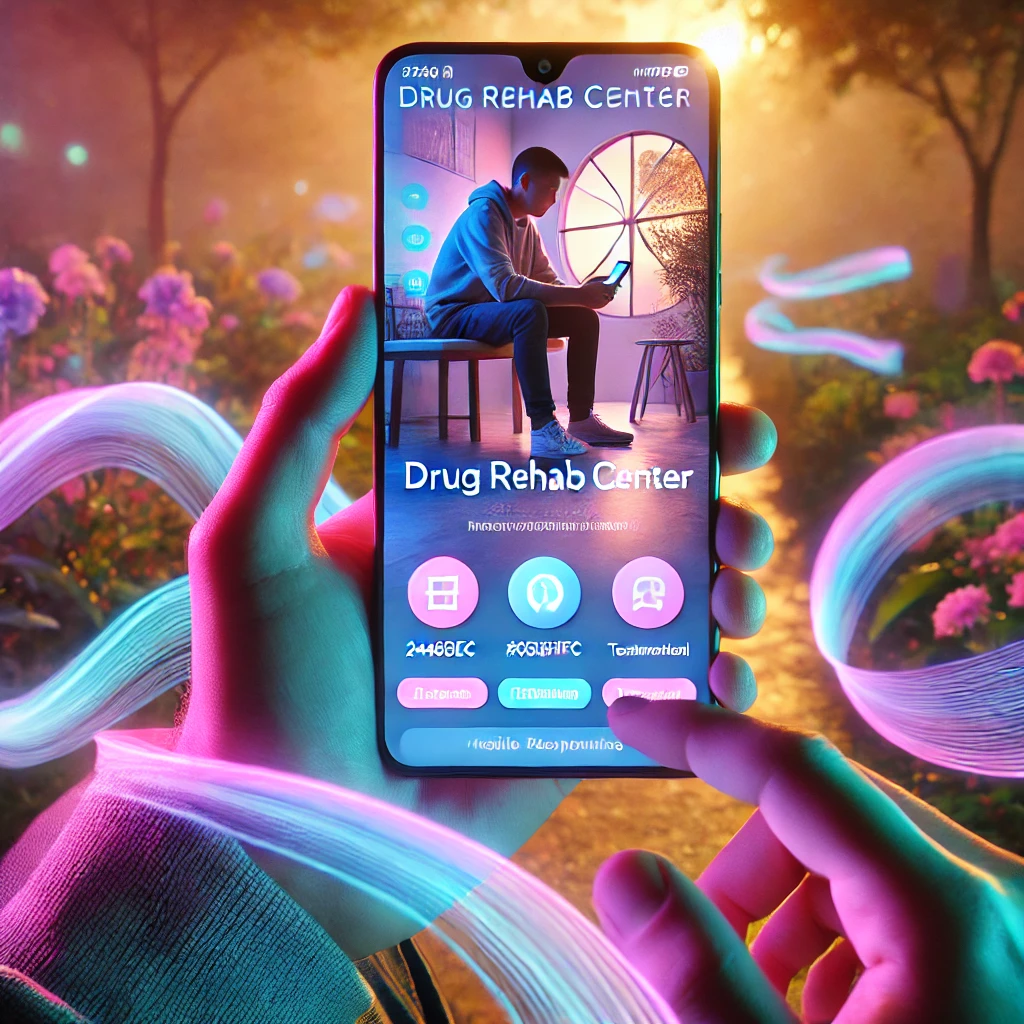
Master Website Optimization for Drug Rehab Centers to Attract More Clients
Table of Contents
website optimization for drug rehab centers
Key Takeaways
- Website optimization transforms digital presence into a lifeline for clients.
Optimized drug rehab websites ensure fast-loading pages, mobile-friendliness, and compliance with HIPAA standards. These elements build trust, drive engagement, and improve addiction treatment website performance by reducing bounce rates and increasing inquiries. - Content and design drive trust and action.
Empathetic content like recovery stories, FAQs, and staff introductions addresses user concerns. User-friendly rehab websites with intuitive navigation, calming visuals, and impactful CTAs foster confidence and encourage potential clients to reach out. - Local SEO connects you with nearby clients.
Enhance visibility by optimizing Google Business Profiles, incorporating location-based keywords, and ensuring consistency across directories. These strategies help attract local clients searching for addiction treatment services. - Data and analytics refine strategies for better outcomes.
Tracking KPIs like bounce rates, session durations, and conversion rates reveals improvement opportunities. Leveraging analytics tools enables rehab centers to refine web strategies, boost conversions, and continuously enhance their digital presence.
Why Website Optimization Matters for Drug Rehab Centers
What’s the first step toward saving more lives through addiction treatment? For drug rehab centers, the answer lies in website optimization. An optimized website is not merely a marketing tool—it’s a lifeline connecting those in need with the services that can transform their lives.
Do you know what keeps a rehab center's digital presence alive and thriving? Website optimization isn't just a fancy buzzword; it's the secret sauce that determines whether a potential client stays or leaves within seconds. A thoughtfully designed, well-performing website does more than display information—it builds trust, drives engagement, and most importantly, ensures your center is found when someone needs help the most.
The Importance of Drug Rehab Website Optimization
How critical is your website to saving lives? For a drug rehab center, it's not just about looking good online; it's about creating a digital space where trust meets usability. Website optimization plays a central role in achieving this balance.
Why Optimization Is a Non-Negotiable
- Compliance Equals Confidence: Addiction treatment websites must adhere to strict legal and ethical standards like HIPAA compliance. A secure website assures potential clients that their information is safe.
- Performance Drives Engagement: A fast, responsive website directly impacts inquiries. Pages that load quickly reduce frustration, ensuring visitors stay longer.
- Tailored Strategies Matter: Drug rehab centers have unique needs that go beyond standard optimization practices. Every detail, from navigation to tone, must resonate with individuals seeking help.
Addressing Common Objections
Are you worried about costs or the complexity of optimization? Consider this: an optimized website isn’t an expense—it’s an investment that pays for itself through increased inquiries and conversions. Studies show that websites with faster loading speeds experience up to 70% fewer bounce rates.
Real-World Impact
Imagine a family searching for help. They land on a secure, visually appealing, and easy-to-navigate rehab site. Their experience sets the stage for trust, leading to an inquiry that could change their lives.
How Optimized Websites Drive Client Inquiries and Build Trust
First impressions aren't just visual—they're visceral. A potential client’s first interaction with your website can determine whether they feel safe reaching out or click away forever. Optimized websites are built to inspire confidence and prompt action.
Key Elements That Drive Inquiries
- Speed: Did you know that 53% of mobile users leave a page if it takes more than three seconds to load? Fast-loading pages signal professionalism and respect for your user’s time.
- Design: User-friendly rehab websites guide visitors intuitively, offering clear navigation, concise information, and engaging visuals.
- Credibility: Trust-building features like testimonials, certifications, and privacy assurances reduce hesitation and encourage inquiries.
Building Trust with Visual Cues
- Testimonials: Share real recovery stories with photos or videos to humanize your services.
- Certifications and Compliance: Highlight accreditations and HIPAA-compliant features prominently on your homepage.
- Privacy Policies: Assure visitors that their information remains confidential, boosting their confidence to make contact.
The Role of Mobile Optimization
Nearly 60% of healthcare searches occur on mobile devices. A mobile-friendly website ensures accessibility for users searching for immediate help, preventing frustration and increasing the likelihood of inquiries.
Success Story
Consider a rehab center that revamped its site to prioritize speed, testimonials, and mobile accessibility. Within two months, their inquiries increased by 30%, proving that trust-building elements and optimization go hand in hand.
List: Benefits of Website Optimization
- Enhanced search visibility through strategic SEO techniques.
- Increased trust via compliance and user-friendly features.
- Higher client inquiries and conversions driven by intuitive design.
Table: Before and After Optimization
| Challenge | Without Optimization | With Optimization |
| Low Visibility | Poor search rankings | Higher search visibility through targeted SEO. |
| High Bounce Rates | Frustrated users leaving after seconds | Improved engagement with fast-loading pages. |
| Lack of Trust | Skeptical users unsure of credibility | Trust-building features encouraging inquiries. |
Optimized websites are more than digital tools—they're lifelines for individuals in need of help. By prioritizing speed, usability, and trust-building features, rehab centers can transform their online presence into a beacon of hope.

Conversion Rate Optimization for Drug Rehab Centers
Is your website transforming visitors into clients? Conversion rate optimization (CRO) is not just a marketing buzzword—it’s the linchpin for success in the highly competitive field of addiction treatment. With the unique needs of potential clients and their families, CRO strategies must be empathetic, action-driven, and tailored to this sensitive industry.
Creating User-Friendly Designs for Addiction Treatment Websites
Would you stay on a confusing or slow website? Most people won’t. User-friendly design is the foundation of a website that engages visitors and converts them into clients.
What Makes a Design User-Friendly?
- Intuitive Navigation: Visitors should easily find what they’re looking for. Menus must be clear, categories straightforward, and key actions—like contacting the center—prominent.
- Mobile-Responsiveness: Over half of searches for addiction treatment occur on mobile devices. A mobile-friendly design ensures accessibility for all users.
- Visual Appeal: Calming visuals and a professional layout instill trust and convey the center’s credibility.
Design Recommendations
- Use responsive layouts that adapt seamlessly across devices.
- Incorporate clean typography for readability.
- Highlight calls-to-action (CTAs) with contrasting colors to draw attention.
List: Characteristics of User-Friendly Rehab Website Designs
- Intuitive navigation.
- Mobile responsiveness.
- Calming visuals and clear CTAs.
Table: Key Design Elements and Their Impact on Engagement
| Design Element | Impact |
| Intuitive Navigation | Increases user retention and engagement. |
| Mobile Responsiveness | Ensures access for all users. |
| Calming Visuals | Builds trust and reduces user anxiety. |
Crafting Effective Calls-to-Action for Rehab Center Websites
Is your website asking the right questions? A clear and empathetic call-to-action (CTA) is the bridge between visitors and inquiries. The best CTAs speak directly to the user’s emotions and needs.
What Makes a CTA Effective?
- Clarity: Use direct language like "Start Your Recovery Today".
- Visibility: Place CTAs prominently on every key page.
- Empathy: Address the reader’s hesitations with comforting phrases like "Talk to a Specialist".
Examples of Impactful CTAs
- "Take the First Step Toward Recovery"
- "Find Hope and Help Today"
- "Speak to Our Care Team—We’re Here for You"
List: Best Practices for Effective CTAs
- Clear, concise language.
- Prominent placement on the page.
- Reassuring and empathetic wording.
Table: Comparison of Poorly Written vs. Effective CTAs
| CTA Type | Example | Effectiveness |
| Poorly Written CTA | "Click Here for More Information" | Low clarity and engagement. |
| Effective CTA | "Talk to a Specialist Today" | High engagement and action rate. |
Using Empathetic Content to Increase Conversions
What do potential clients want to feel when visiting your website? Safe, understood, and supported. Empathetic content addresses fears and questions while fostering trust.
Why Empathy Matters
Potential clients and their families often face uncertainty and stigma. Content that speaks to their experiences—like recovery stories and detailed FAQs—provides reassurance.
Types of Empathetic Content
- Success Stories: Highlight real recovery journeys to inspire hope.
- Staff Introductions: Showcase your team’s expertise and compassion to build connection.
- FAQs: Address common concerns about costs, privacy, and treatment steps.
List: Effective Types of Empathetic Content for Rehab Websites
- Personal recovery stories.
- Counselor introductions and staff profiles.
- FAQs about the treatment process.
Table: Content Type, Emotional Impact, and Expected Outcome
| Content Type | Emotional Impact | Expected Outcome |
| Success Stories | Builds hope and connection. | Increased trust and inquiries. |
| Staff Profiles | Humanizes the facility. | Greater engagement and confidence. |
| FAQs | Reduces uncertainty. | Higher client inquiries. |
Conversion rate optimization transforms a website into a welcoming gateway for those seeking help. By prioritizing user-friendly design, empathetic content, and impactful CTAs, your rehab center can connect with more families and individuals, offering them the support they need.

Core Web Vitals and Performance Optimization
What happens when your website loads too slowly or shifts unpredictably? Many users will leave before they even read a word. For drug rehab centers, ensuring a seamless online experience is not just about convenience—it’s about trust, accessibility, and creating a meaningful first impression. Core Web Vitals (CWVs) are Google's way of measuring this experience.
Fast-Loading Rehab Websites for Improved User Engagement
Do users leave your site before it even loads? Speed is essential. For rehab centers, where people are often searching in moments of urgency, slow-loading websites can mean losing potential clients.
Why Speed Matters
Fast-loading websites reduce bounce rates and foster trust. When visitors can quickly access information, they are more likely to stay engaged and contact your center. Studies show that sites with a load time under 2 seconds have significantly lower abandonment rates.
How to Optimize Website Speed
- Compress large images to improve loading times.
- Use Content Delivery Networks (CDNs) to serve pages faster globally.
- Minimize JavaScript and CSS for smoother functionality.
Table: Impact of Website Speed on User Engagement
| Metric | Impact | Outcome |
| Load Time < 2 seconds | Lower bounce rates | Higher visitor retention and trust. |
| Load Time > 3 seconds | Increased user frustration | Lost inquiries and lower rankings. |
Mobile-Friendly Website Optimization for Addiction Treatment Centers
How do mobile users perceive your website? Most searches for addiction treatment start on mobile devices. A site that doesn’t adapt seamlessly risks alienating these users.
Key Features of Mobile Optimization
- Responsive Design: Ensures content adjusts dynamically to screen sizes, improving usability.
- Optimized Images: Resized and compressed visuals load faster without sacrificing quality.
- Streamlined Menus: Simple, touch-friendly navigation enhances accessibility.
List: Key Benefits of Mobile Optimization for Rehab Websites
- Improved accessibility for mobile-first users.
- Enhanced user trust with consistent cross-device experience.
- Increased inquiries from better engagement on mobile.
Table: Features and Benefits of Mobile Optimization
| Feature | Benefit |
| Responsive Design | Seamless user experience across devices. |
| Optimized Images | Faster load times, lower data usage. |
| Simplified Navigation | Reduced user frustration. |
Meeting Core Web Vitals for Better Rankings
Is your website meeting Google’s standards? Core Web Vitals are critical for improving both SEO rankings and user satisfaction. These metrics—Largest Contentful Paint (LCP), First Input Delay (FID), and Cumulative Layout Shift (CLS)—quantify how users experience your site.
Understanding Core Web Vitals
- LCP (Largest Contentful Paint): Measures load speed. Faster is better.
- FID (First Input Delay): Tracks how quickly a site responds to user interactions.
- CLS (Cumulative Layout Shift): Evaluates visual stability—no one likes unexpected shifts while reading.
List: Steps to Optimize Core Web Vitals
- Improve server response times for faster LCP.
- Minimize JavaScript to reduce FID.
- Set fixed dimensions for images and ads to stabilize CLS.
Table: Core Web Vitals Metrics and Optimization Tips
| Metric | Definition | Optimization Tip |
| LCP | Measures loading speed | Compress images and optimize server responses. |
| FID | Measures interactivity | Minimize JavaScript, prioritize critical tasks. |
| CLS | Measures layout stability | Use fixed dimensions for visuals and ads. |
Optimizing Core Web Vitals, speed, and mobile performance transforms drug rehab websites into trusted resources. Are you ready to make these changes and secure more client inquiries?

Mobile Optimization for Drug Rehab Centers
Did you know that over 60% of healthcare-related searches are performed on mobile devices? For drug rehab centers, this trend underscores the necessity of a mobile-friendly digital presence. When users search for addiction treatment services, they expect speed, simplicity, and seamless experiences. If your website doesn’t deliver, they’ll quickly move on to one that does.
Mobile-First Design Strategies for Rehab Websites
Are you designing for mobile users first or as an afterthought? Mobile-first design focuses on creating websites that prioritize mobile functionality while ensuring they scale effortlessly to larger screens.
What is Mobile-First Design?
Mobile-first design begins with the smallest screens and builds up, ensuring mobile usability remains the primary focus. This approach is critical for drug rehab centers since most potential clients and their families search for services on mobile devices.
List: Core Principles of Mobile-First Design
- Start Small: Design for smaller screens first and adapt for larger devices.
- Simplify Navigation: Ensure menus are thumb-friendly and intuitive.
- Prioritize Load Speed: Optimize for mobile networks by compressing media and minimizing code.
Practical Steps for Implementing Mobile-First Design
- Use responsive frameworks, like Bootstrap, to create flexible layouts.
- Test designs on various devices to identify usability issues.
- Prioritize lightweight media and eliminate unnecessary scripts.
Table: Mobile-First vs. Desktop-First Design Approaches
| Approach | Strengths | Weaknesses |
| Mobile-First | Prioritizes majority (mobile users). | May require additional desktop refinements. |
| Desktop-First | Strong for large-screen visuals. | Risks poor usability for mobile users. |
Catering to the Mobile User Base for Drug Rehab Services
What do mobile users expect from your website? Urgency often drives mobile searches for addiction treatment. These users need immediate, actionable information without barriers.
Understanding Mobile User Behavior
Mobile users are often pressed for time and searching for immediate solutions. Features like click-to-call buttons, easily accessible contact forms, and concise information are non-negotiables.
List: Essential Features for Mobile Users
- Click-to-Call Buttons: Allow immediate phone calls with a single tap.
- Simplified Navigation: Clear menus guide users directly to needed information.
- Prominent Location Details: Display directions and contact info clearly.
How to Tailor Your Website for Mobile Users
- Use large, tappable buttons to reduce frustration.
- Ensure forms are short and optimized for touchscreens.
- Highlight critical information like contact details and treatment options upfront.
Table: Common Mobile User Behaviors and Website Features
| Behavior | Feature | Benefit |
| Quick access to contact info | Click-to-call button | Immediate connection with the center. |
| Urgent need for local services | Prominent location details | Simplifies the search for nearby facilities. |
| Preference for fast browsing | Simplified navigation | Reduces time spent searching for key info. |
The Impact of Mobile Optimization on Search Rankings and User Trust
Do slow, unresponsive websites cost you potential clients? Google prioritizes mobile-friendly sites in its rankings. For rehab centers, this means mobile optimization isn’t just a convenience—it’s a necessity for visibility.
How Mobile Optimization Affects SEO
Google uses mobile-first indexing, meaning it evaluates the mobile version of your site for ranking. A poorly optimized mobile site can lead to lower rankings and reduced traffic, even if the desktop version performs well.
Building Trust Through Mobile-Friendly Design
A mobile-optimized site signals professionalism and care, instilling confidence in potential clients. Users who encounter quick load times, responsive layouts, and intuitive features are far more likely to engage and convert.
List: Benefits of Mobile Optimization
- Improved Search Visibility: Higher rankings in mobile-first indexing.
- Increased Engagement: Users stay longer on fast, responsive sites.
- Enhanced Trust: Mobile-friendly designs show attention to user needs.
Table: Mobile Optimization Benefits for Rehab Websites
| Feature | Benefit |
| Simplified Navigation | Easier browsing on small screens. |
| Faster Load Times | Reduced frustration, higher engagement. |
| Mobile-Optimized CTAs | Increased conversion rates. |
Optimizing your website for mobile isn’t optional—it’s an essential strategy for engaging users and increasing inquiries. Are you ready to ensure your drug rehab center’s site meets the expectations of mobile users?

Building Trust with Website Features
Would you trust a rehab center that doesn’t show its credentials or success stories? For addiction treatment websites, building trust isn’t just important—it’s essential. People searching for rehab services are often in vulnerable states, seeking reassurance and authenticity. Trust-building features like testimonials, certifications, and transparency can make the difference between someone choosing your center or moving on.
Adding Testimonials and Certifications to Drug Rehab Websites
Nothing speaks louder than real stories and credible credentials. Testimonials and certifications serve as powerful trust signals, addressing doubts and providing emotional reassurance to potential clients and their families.
How Testimonials Humanize Your Brand
Testimonials showcase the real impact of your services. They provide relatable proof that your center has helped others, easing hesitations for those considering your services. Use diverse stories that represent different demographics and challenges to resonate with a broader audience. Including photos or videos enhances authenticity, making these stories even more compelling.
Why Certifications Matter
Certifications demonstrate professionalism and adherence to industry standards. They show that your center is not just legally compliant but also dedicated to providing top-notch care. Display these prominently on your homepage and service pages to reinforce trust at first glance.
List: Best Practices for Testimonials and Certifications
- Use authentic client success stories.
- Include visuals like photos or videos for added credibility.
- Display certifications prominently on key pages.
Table: Websites With vs. Without Testimonials and Certifications
| Element | With | Without |
| Testimonials | Higher engagement and trust | Reduced credibility |
| Certifications | Increased professionalism perception | Potential skepticism from users |
Ensuring HIPAA Compliance for Addiction Treatment Websites
Are you safeguarding user privacy while building trust? For rehab centers, ensuring HIPAA compliance isn’t just a legal requirement—it’s a trust-building opportunity. Users need to feel confident that their personal information is secure.
What is HIPAA Compliance, and Why is it Critical?
HIPAA compliance ensures that patient information is protected, preventing unauthorized access and misuse. For websites, this means using secure data storage, encryption, and clear privacy policies. Non-compliance can lead to hefty fines and damage to your reputation.
Steps to Achieve HIPAA Compliance
- Use SSL certificates to encrypt user data.
- Limit data collection to what is absolutely necessary.
- Include a transparent privacy policy outlining how user information is handled.
List: Steps to Ensure HIPAA Compliance
- Secure data transfer with SSL certificates.
- Implement user authentication and access controls.
- Regularly audit website security for vulnerabilities.
Table: Risks of Non-Compliance vs. Benefits of Compliance
| Aspect | Non-Compliance | Compliance |
| Legal Penalties | High fines and lawsuits | Avoidance of legal risks |
| User Trust | Reduced credibility | Enhanced user confidence |
Establishing Credibility with Transparent Communication
What are you hiding? If your website doesn’t provide clear and honest information, users may wonder if you have something to hide. Transparent communication reassures visitors, builds trust, and encourages inquiries.
Key Areas for Transparency
- Treatment Details: Clearly explain your methods and the benefits clients can expect.
- Pricing: Offer straightforward cost breakdowns, even if general ranges are provided.
- Privacy Policies: Clearly state how user data will be handled to alleviate concerns.
Practical Tips for Transparent Communication
- FAQs: Address common questions about services, costs, and what to expect.
- Use simple language to avoid confusion.
- Provide direct contact options, like a phone number or chat feature, for personalized inquiries.
List: Key Areas Requiring Transparency
- Treatment methods and processes.
- Pricing and payment options.
- Privacy policies and data usage practices.
Table: Transparent vs. Unclear Messaging Examples
| Aspect | Transparent | Unclear |
| Pricing | "Detox starts at $3,000 per month" | "Costs vary—contact us for details" |
| Privacy Policy | "We do not share your data with anyone" | "Your data may be used as needed" |
Trust isn’t optional—it’s the foundation of any successful drug rehab website. By incorporating testimonials, certifications, HIPAA compliance, and transparent communication, you can alleviate user doubts and encourage action. What steps will you take today to build trust online?

Local SEO for Drug Rehab Centers
Why Local SEO Matters for Addiction Treatment Facilities
Did you know that 46% of Google searches are for local information? For drug rehab centers, this statistic highlights the importance of being easily found by nearby clients. Local SEO connects your services with those actively searching, offering an immediate opportunity to make a meaningful impact. With tools like Google Business Profile (GBP) and location-based keywords, you can attract more inquiries and establish your presence in your community.
| Key Benefits of Local SEO | How It Helps Rehab Centers |
| Increased visibility in local searches | Attracts nearby clients |
| Higher inquiries and engagement | Encourages potential clients to take action |
| Stronger connection with the community | Builds trust and credibility |
Optimizing Google Business Profile for Local Searches
A fully optimized GBP can significantly improve your rehab center’s visibility on local search results. What happens when a potential client searches for “rehab center near me” and your GBP appears with all the details they need? They’re likely to reach out.
To optimize your GBP:
- Add Complete Information: Include your address, phone number, business hours, and services.
- Use High-Quality Images: Showcase your facility to build trust.
- Encourage Reviews: Responding to reviews demonstrates your commitment to clients and builds credibility.
| Field | Why It Matters | Optimization Tip |
| Business Name | Ensures consistency across platforms | Match with other listings to avoid confusion |
| Reviews | Builds trust and encourages inquiries | Respond promptly and professionally |
| Photos | Creates a welcoming and credible impression | Use authentic, high-resolution images |
Targeting Clients with Location-Based Keywords
Would you search for “rehab center” or “rehab center in Los Angeles”? Most users add a location, making location-based keywords critical for local SEO success. These keywords enhance your visibility and match user intent, increasing the chances of inquiries.
Examples of effective location-based keywords:
- “Addiction treatment near me”
- “Alcohol detox in [city/state]”
- “Rehab centers in [city]”
Practical implementation steps:
- Incorporate these keywords naturally in your meta descriptions, titles, and headers.
- Develop location-specific landing pages for targeted outreach.
- Use keywords in blog posts and FAQs to drive organic traffic.
| Keyword Example | Best Use |
| “Rehab centers in Miami” | Landing pages, headers |
| “Detox near me” | Blog posts, meta descriptions |
Leveraging Local Directories to Enhance Visibility
Directories like Yelp, Healthgrades, and addiction-specific platforms are invaluable for reaching potential clients. Imagine searching for a rehab center and finding conflicting or outdated information—would you trust that facility? Consistency in your directory listings ensures users can find and trust your services.
Steps to optimize your directory presence:
- Verify Your Listings: Claim and maintain your profiles on major directories.
- Ensure Consistent Information: Align your name, address, and phone number (NAP) across all listings.
- Add Engaging Details: Include high-quality images and compelling descriptions.
| Directory | Why It’s Important | Action |
| Google Business Profile | Boosts search visibility | Keep information updated |
| Yelp | Provides broad visibility and reviews | Monitor and respond to feedback |
| Healthgrades | Adds industry-specific credibility | Highlight certifications and trust signals |
By ensuring accuracy and consistency, your rehab center can increase local visibility and foster trust, turning directory visitors into clients.
Local SEO isn’t just about improving search rankings; it’s about connecting with the people who need your services most. By optimizing Google Business Profiles, using targeted keywords, and maintaining accurate directory listings, rehab centers can enhance visibility, build trust, and ultimately drive more inquiries.

Content Optimization for Rehab Websites
Why Content Optimization is Crucial for Rehab Centers
Ever wondered why some rehab websites attract more clients than others? The answer lies in content optimization. By addressing user concerns and aligning with search engine algorithms, rehab centers can improve both their visibility and engagement. High-quality content does more than inform—it builds trust, answers questions, and provides hope.
| Benefits of Content Optimization | Why It Matters |
| Increased engagement through quality content | Keeps users interested and on your site longer |
| Improved SEO rankings with targeted keywords | Helps users find your center online |
| Greater trust via success stories | Creates emotional connections with visitors |
Creating Blogs and FAQs for Drug Rehab Audiences
Blogs and FAQs are among the most powerful tools in your content strategy. Why? They combine the art of storytelling with the science of answering specific user needs. Blogs establish your expertise, while FAQs address immediate concerns, such as treatment options and costs.
To create effective blogs:
- Focus on relevant topics, such as "How to Choose the Right Rehab Center".
- Incorporate targeted keywords like "addiction treatment SEO".
- Use a conversational tone that resonates with your audience.
For FAQs:
- Address common queries about processes, costs, and outcomes.
- Organize questions by categories for easy navigation.
- Use clear, concise language for quick answers.
| Content Type | Purpose | Example |
| Blogs | Provides value and establishes expertise | “How to Prepare for Rehab Treatment” |
| FAQs | Addresses immediate user concerns | “What Are the Costs of Drug Rehab?” |
Sharing Success Stories to Inspire Trust
Would you trust a rehab center without proof of success? Success stories inspire hope and build credibility by showcasing real-life transformations. These stories not only humanize your brand but also reassure families and potential clients that recovery is possible.
Best practices for success stories:
- Focus on real client experiences.
- Use relatable and emotional language to connect with readers.
- Include visuals like videos or photos for authenticity.
| Success Story Format | Benefit |
| Written Narratives | Engages readers through detailed accounts |
| Video Testimonials | Captures emotional depth and trust |
Using Engaging Content to Address Client Concerns
Potential clients often hesitate due to unanswered questions or fears. What if your content could speak directly to their worries? Engaging content reassures users and encourages them to take the next step by providing clarity and empathy.
Examples of engaging content include:
- Articles answering common questions like "What Should I Expect During Rehab?"
- Infographics summarizing treatment processes.
- Videos showcasing the facility and staff.
Tips for creating engaging content:
- Use a conversational tone to build relatability.
- Focus on clarity and relevance to avoid overwhelming users.
- Address objections, such as affordability, with real solutions.
| Concern | Content Solution |
| "Is rehab effective?" | Success stories with stats on recovery outcomes |
| "How much does it cost?" | Blogs explaining payment options and financial aid |
Optimized content isn’t just about ranking higher—it’s about connecting with those who need help the most. By crafting blogs, FAQs, success stories, and engaging content, rehab centers can not only answer questions but also inspire hope and trust, ultimately leading to more inquiries and successful outcomes.

Tracking Website Performance for Drug Rehab Centers
Did you know? Websites that leverage data analytics to track performance see up to a 30% improvement in user engagement. For drug rehab centers, tracking website performance is more than just crunching numbers; it’s about identifying user pain points and crafting a seamless experience that drives inquiries. By analyzing metrics such as bounce rates, session durations, and conversion rates, rehab centers can refine their strategies and ensure their digital presence translates into real-world impact.
| Metric | What It Measures | Why It Matters |
| Bounce Rate | Percentage of users leaving after one page | Indicates the site’s relevance and engagement |
| Average Session Duration | Time spent on the site | Reflects user interest and content quality |
| Conversion Rate | Percentage of visitors taking desired actions | Directly correlates to lead generation |
Monitoring Key Performance Indicators (KPIs) Like Bounce Rates
How do you measure your website's success? For drug rehab centers, monitoring KPIs like bounce rates is crucial. A high bounce rate could signal slow loading times or irrelevant content, while session duration reveals whether users find your site engaging. Metrics like exit rates complement these, showing where users drop off.
To improve KPIs:
- Enhance loading speed. Compress images and optimize code to retain impatient visitors.
- Revamp headlines. Use captivating titles that resonate with user concerns.
- Simplify page layouts. Easy-to-navigate designs encourage deeper exploration.
| KPI Issue | Cause | Solution |
| High Bounce Rate | Slow load times | Optimize images and scripts |
| Low Session Duration | Unengaging content | Add videos, infographics, or blogs |
| High Exit Rate | Confusing page design | Simplify navigation and add clear CTAs |
Pro Tip: Websites with optimized bounce rates see a 50% increase in inquiries, underscoring the importance of constant KPI monitoring.
Using Analytics to Refine Rehab Website Strategies
What if you could read your users’ minds? Analytics tools, while not psychic, come close. By studying user behavior, rehab centers can pinpoint underperforming pages, identify top traffic sources, and understand drop-off points in the user journey. For instance, if a high-traffic page shows a low conversion rate, it might signal unclear CTAs or a lack of compelling content.
Actionable steps:
- Set performance goals. Aim for specific improvements like a 10% reduction in bounce rates.
- Review data trends. Use heatmaps to visualize user behavior and adjust layouts.
- Test changes. Conduct A/B tests to find the most effective designs or headlines.
| Tool | Benefit |
| Google Analytics | Tracks traffic sources and user behavior |
| Hotjar | Visualizes user interactions through heatmaps |
Case Study: A rehab center used analytics to improve a low-performing landing page. By adjusting the CTA placement and refining the page’s content, inquiries increased by 30%.
Improving Conversion Rates with Data Insights
Does your website turn visitors into clients? If not, it’s time to let data guide your conversion strategy. Conversion rates depend on how effectively your site addresses user concerns and facilitates action. Data insights reveal barriers like high form abandonment rates, poor CTA performance, or underwhelming landing pages.
Steps to boost conversions:
- Refine CTAs. Use A/B testing to discover the most effective wording and placement.
- Simplify forms. Reduce the number of required fields and add autofill options.
- Enhance visual appeal. A clean, mobile-friendly design encourages action.
| Conversion Challenge | Cause | Solution |
| Low Click-Through Rate | Weak or misplaced CTAs | Test new placements and action-oriented phrasing |
| High Form Abandonment | Complicated forms | Simplify fields and add autofill features |
Stat Insight: Websites using data-driven strategies for conversion optimization enjoy a 30% higher success rate, proving that numbers don’t just tell a story—they drive action.
By focusing on tracking and refining website performance, drug rehab centers can create user-friendly, high-performing websites that drive meaningful engagement and inquiries. Each metric, from bounce rates to conversions, offers insights to shape an optimized digital strategy. Remember, data isn’t just about numbers; it’s about creating a website that truly serves those who need help the most.

Conclusion: The Role of Website Optimization in Drug Rehab Success
Can your rehab center’s website truly make a difference in someone's life? The answer is a resounding yes. A well-optimized website isn’t just a marketing tool—it’s a lifeline for those seeking addiction treatment. By implementing strategies like conversion rate optimization (CRO), local SEO, and content optimization, rehab centers can significantly improve visibility, engagement, and client inquiries.
Recap of Strategies for Effective Website Optimization
The strategies we’ve discussed—CRO, local SEO, and content creation—aren’t just theoretical. They are proven methods that drive measurable outcomes:
- Conversion Rate Optimization (CRO): Fine-tuning calls-to-action (CTAs) and simplifying forms to increase client inquiries.
- Local SEO: Using Google Business Profile and location-based keywords to connect with nearby clients.
- Content Optimization: Providing engaging blogs, FAQs, and success stories to address user concerns and build trust.
| Strategy | Key Benefit |
| CRO | Higher conversion rates |
| Local SEO | Increased local visibility |
| Content Optimization | Enhanced user engagement and trust |
The Impact of Website Optimization on Drug Rehab Success
Why does website optimization matter? Because it directly influences how many people you can help. An optimized website improves search engine rankings, creates a seamless user experience, and fosters trust among potential clients.
Measurable outcomes of optimization include:
- Higher search rankings through targeted SEO strategies, making your rehab center more discoverable.
- Reduced bounce rates with fast-loading, mobile-friendly pages that keep users engaged.
- Improved conversions by addressing user concerns and presenting compelling reasons to reach out.
| Before Optimization | After Optimization |
| Bounce Rate: 60% | Bounce Rate: 40% |
| Conversion Rate: 3% | Conversion Rate: 7% |
Example Success Story: One rehab center saw a 30% increase in client inquiries after refining their landing pages and optimizing CTAs based on analytics insights.
Encouragement to Implement Effective Strategies
What’s holding you back? Website optimization doesn’t require a massive overhaul—it starts with small, impactful changes. Even adjusting page load speeds or simplifying forms can create noticeable improvements.
Actionable steps to get started:
- Audit your current website. Identify areas that need improvement, like loading speed or content clarity.
- Implement one strategy at a time. Focus on quick wins, like optimizing CTAs or improving local SEO.
- Monitor results. Use analytics tools to track progress and refine your strategies.
| Change | Impact |
| Optimize images for speed | Reduced bounce rates |
| Add clear CTAs | Increased client inquiries |
Motivational Reminder: Every small improvement to your website takes you closer to saving more lives. A fast, user-friendly site ensures no one looking for help feels frustrated or lost.
Staying Ahead with Continuous Optimization
Is your website ready for tomorrow’s challenges? Trends change, user behaviors shift, and technology evolves. Regular website audits, content updates, and performance monitoring ensure your rehab center stays ahead.
Tips for staying proactive:
- Update content regularly. Reflect new services or address evolving client needs.
- Use analytics insights. Identify opportunities for improvement and adapt quickly.
- Test and refine. Regularly perform A/B tests on design elements and CTAs.
| Action | Benefit |
| Regular audits | Improved performance |
| Content updates | Better user engagement |
Final Thought: A continuously optimized website is more than a digital presence—it’s a commitment to your mission of helping individuals find the path to recovery.
Are you ready to optimize your website for success? Start today with one small change, and watch how your efforts lead to greater impact, higher inquiries, and a stronger connection with those who need your services most.
Questions You Might Ponder
How long does it typically take to see results from implementing SEO strategies for a drug rehab center?
SEO results are not immediate. Depending on factors like competition, website optimization level, and content quality, you might see noticeable improvements in 3–6 months. Local SEO changes, such as optimizing your Google Business Profile, can lead to quicker results. For broader strategies like content and link-building, results compound over time, delivering long-term benefits. Patience and consistent effort are key to sustaining visibility and attracting clients.
What budget should a drug rehab center allocate for SEO services?
The budget for SEO services varies widely based on the scope of work, agency expertise, and competition. A small facility may spend $500–$2,000 per month for basic services like local SEO. Larger centers may need $3,000–$10,000 monthly for comprehensive strategies, including content creation and backlink building. Assess your goals and competition to determine the right investment level. Remember, SEO is a long-term strategy that typically provides high ROI.
How can a drug rehab center ensure its content complies with healthcare regulations and guidelines?
Compliance is critical in healthcare marketing. Ensure your content adheres to HIPAA guidelines, avoids misleading claims, and clearly states policies on data handling and privacy. Review all content for accuracy and have it approved by licensed professionals when referencing treatment methods or outcomes. Include disclaimers where necessary. By aligning content with ethical standards, you not only build trust but also safeguard your reputation and legal standing.
What are some effective ways to handle negative reviews for a rehab center?
Responding to negative reviews professionally and empathetically is essential. Acknowledge the concern, offer a resolution, and invite the reviewer to discuss the issue offline to maintain privacy. Avoid defensiveness or vague replies, as they can harm your credibility. Show a willingness to improve and learn from feedback. Positive engagement with reviews demonstrates transparency and builds trust with future clients.
How does Google’s algorithm weigh the importance of E-E-A-T (Experience, Expertise, Authoritativeness, and Trustworthiness) for ranking rehab centers?
Google prioritizes E-E-A-T heavily, especially for industries like healthcare. Sites with clear credentials, expert-authored content, and strong trust signals (e.g., testimonials, reviews, and accreditations) tend to rank higher. For rehab centers, showcasing staff qualifications, providing detailed service information, and maintaining a transparent online presence directly impact rankings. Regular updates and high-quality backlinks from authoritative sources further solidify your site’s authority and credibility.
Is your rehab center’s website reaching its full potential? Start optimizing today to save more lives and grow your impact.